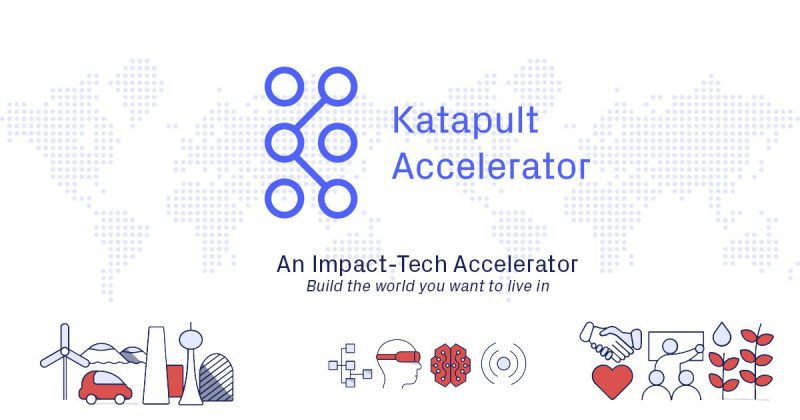Huawei Charts Global AI Dominance: Unveils Ambitious Computing Strategy at Connect 2023

Chinese tech giant Huawei has unveiled an ambitious strategy to develop AI-powered solutions across diverse verticals, aiming to establish a competent computing 'backbone' and become a global partner of choice for individual, corporate, and government consumers. This commitment was a central theme at Huawei Connect 2023, the company’s annual flagship event for the global ICT industry, held physically in Shanghai for the first time since the COVID-19 pandemic in 2020.
During a keynote address, Sabrina Meng, Huawei’s Deputy Chairwoman, Rotating Chairwoman, and CFO, reiterated the company’s dedication by unveiling a whitepaper titled “Accelerating Intelligent Transformation.” Meng emphasized Huawei’s ongoing efforts to delve deep into foundational AI technologies and construct a robust computing backbone for China. She highlighted the company’s focus on strengthening the synergy between hardware, software, chips, edge, devices, and cloud to cultivate a fertile ground for a thriving ecosystem, ultimately aiming to meet the diverse AI computing needs of various industries. Meng explicitly stated Huawei’s aspiration to become “another option for the world,” signaling its intent for global leadership in the burgeoning field of artificial intelligence.
The Huawei Connect event itself has a rich history of showcasing the company’s innovative solutions. From envisioning an intelligent world in 2016 and aiming to be among the top five global cloud service providers by 2017, to revealing its AI strategy in 2018 and computing strategy in 2019, the event serves as a crucial platform for Huawei. The 2020 virtual event saw Chairman Guo Ping announce the creation of new values through synergy across five tech domains: 5G, connectivity, cloud, AI, computing, and industry applications. This year’s physical gathering brought together business leaders, tech experts, partners, developers, and industry stakeholders from around the world to explore new opportunities for an intelligent future.
Further enhancing its AI infrastructure, David Wang, Huawei’s Executive Director of the Board and Chairman of the ICT Infrastructure Managing Board, announced the launch of the new Atlas 900 SuperCluster. This latest addition to Huawei’s Ascend series of computing products is optimized for training massive AI foundation models with over one trillion parameters. The SuperCluster boasts high-density 800GE ports and a two-layer switching network, capable of connecting up to 2,250 nodes per cluster, equivalent to 18,000 NPUs, without oversubscription. Wang also detailed how Huawei has leveraged its strengths in computing, storage, network, and energy to systematically improve system reliability, extending continuous model training support from several days to a month or more. He further launched nine new intelligent industry solutions, based on Huawei’s intelligent transformation reference architecture, tailored for specific sectors like finance, government, manufacturing, electric power, and railways.
Another significant introduction at Huawei Connect 2023 was the Company’s Pangu AI model, presented by Zhang Ping’an, Executive Director and CEO of Huawei Cloud Computing Technologies. Building upon the Pangu Models 3.0 released in July, which featured a 5+N+X decoupling architecture, this new unveiling extends Pangu models into specific applications for mining, government, vehicles, weather, medicine, virtual humans, and R&D. A compelling example is the Pangu Vehicle Model, which addresses the challenge of training autonomous driving systems in complex scenarios. By creating simulated environments and providing automatic annotations, it has dramatically shortened the training cycle for autonomous driving corner cases from over two weeks to just two days. Zhang Ping’an emphasized, “We now offer another option for global customers, partners, and developers to build, train, and use AI models.” The Pangu model suite also includes CodeArts Snap, an intelligent programming assistant akin to GitHub Copilot, trained with 76 billion lines of quality code and 13 million technical documents. CodeArts Snap can generate code, suggest improvements, automatically comment, generate test cases, and deploy services with minimal instruction.
Complementing these developments, Zhang Ping’an also announced the immediate availability of the Huawei Cloud Ascend AI cloud service on the Huawei Cloud website, including a dedicated zone for foundation models. This service enables enterprise users and developers to utilize open-source models like LLaMA and GLM and supports common AI frameworks such as PyTorch and TensorFlow, with robust end-to-end migration tools ensuring smooth transition for 90% of operators. Bruno Zhang, Huawei Cloud CTO, elaborated on Huawei Cloud’s long-term research project to dynamically innovate existing software and hardware structures to uniquely support AI deployment, positioning the company as the cloud of choice for the AI era. This initiative aims to cater to users’ needs across system architecture, data processing, model training, application development, and AI cloud service layers. For enterprises requiring a dedicated versatile AI platform, Ascend AI cloud service can integrate with existing data centers using Huawei’s Cloud Stack 8.3, a hybrid cloud platform, which is now available for mainstream use. These comprehensive implementations across industries, integrating Pangu models into Huawei Cloud products and services, signify a massive boost in productivity, aligning with the company's commitment to tackle significant challenges head-on.
You may also like...
Crisis Looms for Super Eagles: Star Striker Ademola Lookman Out for Crucial Benin Clash!

Nigeria's Super Eagles face Benin Republic in a critical 2026 FIFA World Cup qualifier, with both teams affected by key ...
Super Eagles Triumph: Nigeria Revives World Cup Hopes with Crucial 2-1 Win Over Lesotho!

Nigeria's Super Eagles boosted their 2026 World Cup qualification hopes with a 2-1 victory over Lesotho, featuring goals...
2025 GMA Dove Awards Crown Stars: Forrest Frank, Brandon Lake, Jelly Roll, Leanna Crawford Triumph

The GMA Dove Awards celebrated Christian music's top artists and songs on October 10th at Nashville's Bridgestone Arena,...
BamBam's Heart in Bangkok: First Thai-Language Album Set to Drop

K-pop idol BamBam is set to release his first full Thai-language album, 'HOMETOWN,' on October 10, marking a significant...
Urgent EU Travel Alert: UK Tourists Need Specific Funds from Sunday!

British travellers are advised to be prepared for questions about their financial resources when visiting EU and Schenge...
Millions of Drivers Face Lockout Risk from Keyless Car Fobs!

Keyless car fobs, a modern convenience, are susceptible to malfunctions in cold weather due to battery performance degra...
Music Industry Under Fire: Canice Igwe Claims Nigeria's Scene Stifles Creativity

Rising music sensation Canice Igwe critiques the Nigerian music industry for stifling creativity, advocating for a uniqu...
Kingdom Achievers Awards Shakes Up Industry: New Recording Academy Unveiled, Public Voting Halted!

The Kingdom Achievers Awards (KAA) is revolutionizing its recognition process for its fourth edition, shifting from publ...



